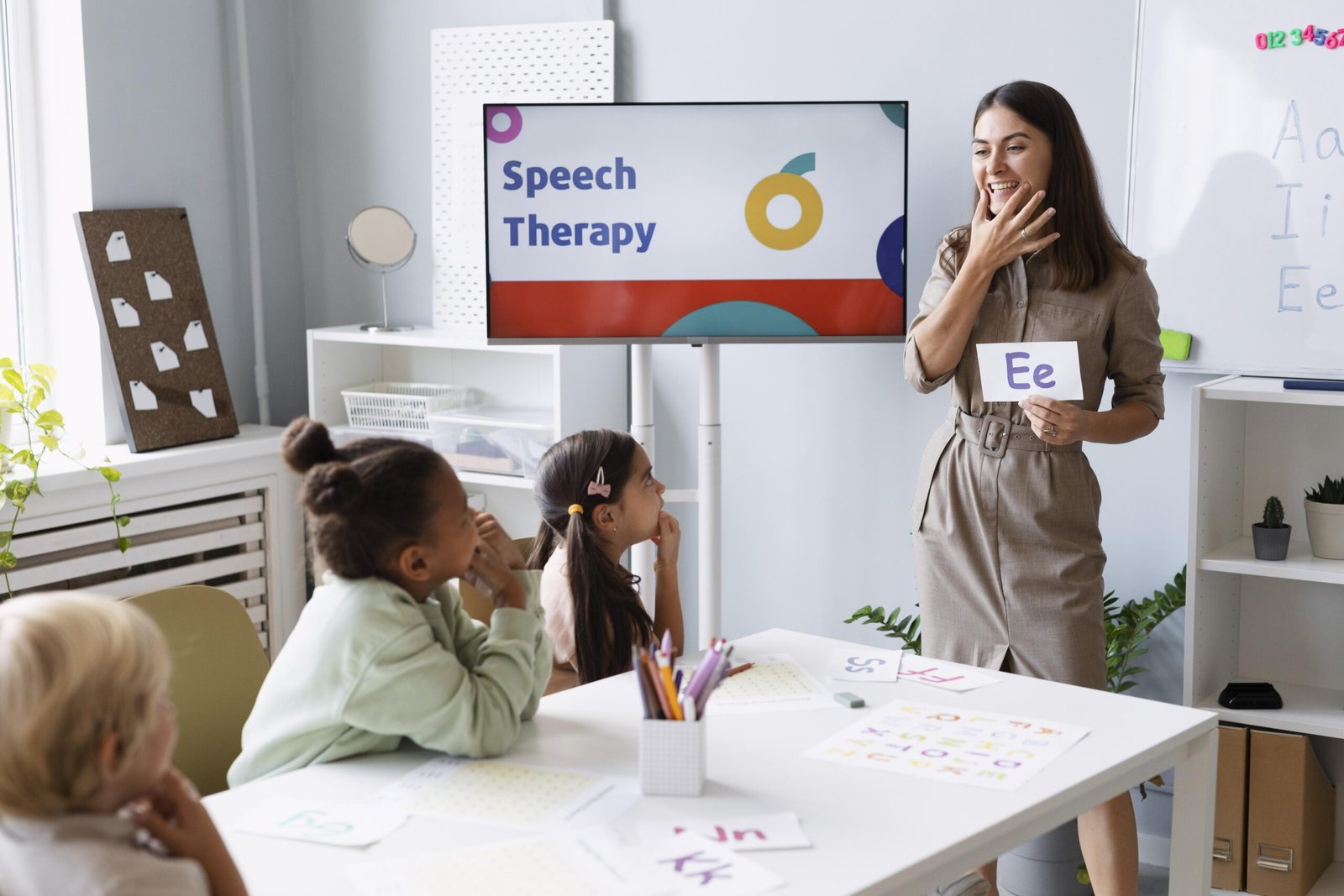
Unlocking Potential: The Transformative Power of a Growth Mindset for Children with Learning Difficulties
Introduction:
In the journey of education, every child encounters unique challenges and triumphs. For children with learning difficulties, the path may seem steeper, but the destination remains just as attainable. The key to navigating this journey with resilience and success lies in fostering a growth mindset. In this blog, we explore the profound importance of cultivating a growth mindset for children, especially those facing learning difficulties, and how it can pave the way for a brighter and more empowered future.
1. Embracing Challenges as Opportunities:
Children with learning difficulties often face tasks that may seem daunting. A growth mindset encourages them to see challenges not as roadblocks but as opportunities for growth. By instilling the belief that intelligence and abilities can be developed through effort and dedication, we empower these young minds to approach difficulties with curiosity rather than fear.
2. Shifting from “I Can’t” to “I Can Learn”:
A common narrative among children with learning difficulties is the feeling of inadequacy – the belief that they simply cannot grasp certain concepts. A growth mindset shifts this narrative to one of empowerment, teaching children to replace “I can’t” with “I can learn.” This subtle shift can be monumental in building the confidence needed to tackle academic challenges head-on.
3. Encouraging Effort and Perseverance:
Learning difficulties often necessitate more effort and time to master certain skills. A growth mindset celebrates the process of learning, emphasizing that dedication and persistence are just as important as the end result. This encouragement of effort instills a sense of resilience, teaching children that setbacks are not failures but stepping stones toward success.

4. Celebrating Progress, Big or Small:
Every step forward is a victory, and a growth mindset encourages the celebration of progress, no matter how small. For children with learning difficulties, who may face daily battles in the classroom, acknowledging their achievements reinforces the idea that improvement is continuous. This positive reinforcement nurtures a sense of accomplishment and motivates further effort.
5. Building Self-Efficacy and Confidence:
A growth mindset is a powerful tool for building self-efficacy – the belief in one’s ability to succeed. By showing children that their efforts contribute to their success, we foster a positive self-image and confidence in their own abilities. This newfound belief becomes a cornerstone for facing future challenges with a sense of agency and determination.
6. Creating a Supportive Learning Environment:
Teachers, parents, and educators play a pivotal role in creating an environment that nurtures a growth mindset. By providing constructive feedback, emphasizing the learning process, and reinforcing the idea that mistakes are opportunities to learn, we establish a foundation for a positive and supportive learning atmosphere.
Conclusion:
In the realm of education, a growth mindset is a guiding light that illuminates the path for every child, regardless of the challenges they may face. For children with learning difficulties, it is a beacon of hope, showing them that their potential knows no bounds. As we collectively invest in cultivating a growth mindset, we empower these young minds to not only overcome obstacles but to thrive, to believe in their capabilities, and to embrace a future where their unique strengths contribute to a world of endless possibilities.
Learn More
The Power of Coaching: A Coach and Speech Therapist’s Perspective on Teacher Well-Being
Introduction:
Teaching is a profession that demands not only intellectual prowess but also emotional resilience. As coaches and speech therapists who work closely with educators, we understand the multifaceted challenges teachers face. In this article, we shed light on the critical importance of coaching for teacher well-being, exploring how this support can make a profound difference in the lives of those who dedicate themselves to shaping the future.
1. Navigating the Complexities of Stress:
Teaching is a high-stakes profession, and the pressures can be overwhelming. From managing classrooms to adapting to evolving educational landscapes, the stressors are many. Coaching provides a safe space for teachers to navigate these complexities, offering strategies to cope with stress and prevent burnout.
2. Cultivating Resilience:
Resilience is a cornerstone of well-being, and coaching equips teachers with tools to bounce back from challenges. By fostering a growth mindset and teaching resilience strategies, coaches empower educators to view setbacks as opportunities for growth rather than insurmountable obstacles.
3. Balancing Professional and Personal Lives:
Striking a balance between professional and personal life is a perpetual challenge for teachers. Coaches work with educators to establish healthy boundaries, effective time management, and self-care practices, ensuring that they can thrive both in and out of the classroom.
4. Enhancing Communication Skills:
Effective communication is a linchpin of well-being. Coaches and speech therapists collaborate to refine teachers’ communication skills, enabling them to express their needs, concerns, and ideas more effectively. Improved communication fosters stronger connections with students, colleagues, and administrators, contributing to a more supportive work environment.

5. Tailored Support for Individual Needs:
Every teacher is unique, and their well-being needs may vary. Coaches provide personalized support, helping educators identify and address specific challenges. Whether it’s managing time, improving organizational skills, or navigating interpersonal dynamics, tailored coaching ensures that teachers receive the support they truly need.
6. Strengthening Emotional Intelligence:
Emotional intelligence is a cornerstone of effective teaching and personal well-being. Coaches and speech therapists collaborate to enhance teachers’ emotional intelligence, enabling them to understand and manage their emotions and those of their students. This skill set is invaluable in creating a positive and nurturing classroom environment.
7. Promoting a Growth Mindset:
Adopting a growth mindset is transformative for both teachers and students. Coaches guide educators in embracing challenges as opportunities for learning and growth. This mindset shift not only enhances teaching effectiveness but also contributes to a more positive and resilient outlook on the profession.
Conclusion:
In the tapestry of education, teachers are the linchpin, and their well-being is paramount. Coaching, with its holistic approach, plays a pivotal role in supporting educators on their journey. By addressing the emotional, professional, and personal dimensions of teaching, coaches and speech therapists contribute to the creation of resilient, empowered, and fulfilled educators. As we prioritize coaching for teacher well-being, we invest not only in the individuals shaping young minds but also in the future of education itself.
Learn More
Nurturing Growth: Why Consulting a Family Coach is Essential for Your Child’s Routine and Growth Mindset
Introduction:
Parenting is a beautiful journey filled with joy, challenges, and growth. As our children navigate the complexities of life, it’s only natural for us as parents to seek guidance and support. One valuable resource that often goes overlooked is the family coach. In this article, we’ll explore the importance of consulting a family coach to enhance your child’s routine and cultivate a growth mindset.
Understanding the Role of a Family Coach:
A family coach is a professional who specializes in guiding families through various challenges, fostering communication, and promoting positive development. Their expertise extends beyond traditional parenting advice, encompassing a holistic approach that addresses both routine and mindset.
1. Establishing Healthy Routines:
Children thrive on routine, and a family coach can provide valuable insights into creating a structured and nurturing environment. Here’s how:
- Tailored Strategies: A family coach collaborates with you to develop personalized strategies that align with your family’s values and dynamics. Whether it’s establishing consistent bedtimes, creating mealtime rituals, or organizing homework routines, a coach can offer practical solutions that work for your unique situation.
- Balancing Act: Juggling the demands of work, school, extracurricular activities, and family time can be overwhelming. A family coach helps you strike a balance that ensures your child’s well-being while fostering a sense of stability and security.
- Conflict Resolution: Family coaches are skilled in facilitating constructive communication. They can guide you through resolving conflicts and creating a positive atmosphere at home, which is essential for maintaining a healthy routine.

2. Cultivating a Growth Mindset:
A growth mindset is the belief that abilities and intelligence can be developed through dedication and hard work. Instilling this mindset in your child is crucial for their long-term success and well-being. Here’s how a family coach can assist:
- Positive Reinforcement: Coaches emphasize positive reinforcement and celebrate effort rather than focusing solely on achievements. This approach encourages children to embrace challenges as opportunities for growth.
- Goal Setting: With the guidance of a family coach, you can work together to set realistic and achievable goals for your child. This process instills a sense of purpose and teaches them the importance of perseverance and resilience.
- Effective Communication: Coaches equip parents with effective communication tools to foster a growth mindset. By encouraging open dialogue, you can help your child navigate setbacks, learn from failures, and develop a positive attitude toward learning.
- Building Confidence: A growth mindset is closely tied to self-confidence. Family coaches provide strategies for nurturing your child’s self-esteem, empowering them to face challenges with a belief in their ability to overcome obstacles.
Conclusion:
In the journey of parenting, seeking support from a family coach can be a game-changer. From establishing healthy routines to cultivating a growth mindset, these professionals offer guidance that goes beyond conventional parenting advice. Embracing the expertise of a family coach not only benefits your child’s development but also enriches the overall well-being of your family. Remember, by investing in positive and proactive strategies, you’re laying the foundation for a future where your child can confidently embrace challenges and flourish in every aspect of life.
Learn More
Unlocking Potential: Strategies for Teachers to Support Students with Learning Difficulties
Introduction:
As educators, our mission extends far beyond the confines of traditional lesson plans and curricula. Every child is unique, and some may face learning difficulties that require special attention and tailored strategies. In this article, we aim to provide valuable insights and practical tips from coaches and speech therapists to help teachers empower students with learning difficulties.
Understanding Learning Difficulties:
Before delving into strategies, it’s crucial to understand that learning difficulties vary widely. Some students may struggle with reading, while others find it challenging to express themselves verbally or in writing. As a teacher, recognizing these differences and being proactive in addressing them is the first step toward creating an inclusive and supportive learning environment.
Collaboration between Teachers, Coaches, and Speech Therapists:
Effective collaboration among teachers, coaches, and speech therapists is essential. Regular communication and joint planning can significantly impact a student’s progress. Coaches and speech therapists can offer valuable insights into individual learning styles, strengths, and areas that need improvement.
Strategies for Reading Difficulties:
- Multisensory Approaches: Engage students in activities that stimulate multiple senses. For instance, incorporating visual aids, hands-on materials, and interactive games can enhance the learning experience for students with reading difficulties.
- Phonics Games: Utilize phonics-based games to reinforce sound-letter associations. These activities not only make learning enjoyable but also provide a structured approach to decoding words.
- Individualized Reading Plans: Work with speech therapists to develop individualized reading plans that cater to each student’s specific needs. This might involve targeted interventions and additional resources, such as audiobooks or reading apps.

Strategies for Expressive Language Difficulties:
- Visual Supports: Use visual aids, charts, and graphic organizers to help students organize their thoughts and express themselves more effectively. Visual supports provide a concrete framework for verbal expression.
- Sentence Starters and Prompts: Provide students with sentence starters and prompts to guide them in constructing sentences. This can reduce anxiety and give them a starting point for expressing their ideas.
- Peer Support: Encourage peer collaboration and support. Pairing students with learning difficulties with supportive peers can boost confidence and provide a positive social environment for language development.
Strategies for Written Expression Difficulties:
- Graphic Organizers: Incorporate graphic organizers to help students structure their writing. These visual tools can assist in organizing thoughts, creating outlines, and ensuring a logical flow in written work.
- Word Processing Tools: Allow the use of word processing tools or speech-to-text software to alleviate the physical challenges associated with writing. This enables students to focus on expressing their ideas without being hindered by fine motor difficulties.
- Regular Feedback and Revision: Provide constructive feedback and encourage students to revise their work. This iterative process not only improves written expression but also instills a growth mindset.
Conclusion:
By adopting these strategies and fostering collaboration among teachers, coaches, and speech therapists, we can create a learning environment where every student has the opportunity to thrive. Remember, it’s not about finding a one-size-fits-all solution but rather tailoring our approaches to meet the unique needs of each child. Together, we can unlock the potential of every student, regardless of their learning difficulties, and pave the way for a brighter future.
Learn More
6 Dynamic Strategies for a Positively Impactful Classroom Speech Therapy
Introduction
Effective communication skills are crucial for a student’s success in the classroom and in life. Speech therapy plays a significant role in helping students overcome speech and language challenges, allowing them to express themselves clearly and confidently. In this blog, we’ll explore six dynamic strategies that can make a positive impact on classroom speech therapy.
1. Individualized Assessment and Goal Setting
The first step in an effective classroom speech therapy program is a thorough individualized assessment. Speech therapists evaluate students to identify their specific speech and language challenges. By understanding the unique needs of each student, therapists can set clear and achievable goals. These goals serve as a roadmap for the therapy sessions and help track progress over time.
2. Incorporate Play-Based Learning
Engaging students in speech therapy can be a challenge, especially when they’re young or easily distracted. One dynamic strategy that speech therapists often use is play-based learning. This approach combines therapy with fun and interactive activities, making it enjoyable for the students. Games, toys, and creative exercises can be incorporated to motivate students and keep them engaged.
3. Collaborative Approach
Speech therapists often work closely with teachers and other school staff to create a supportive and consistent learning environment. Collaboration between educators and speech therapists ensures that the strategies used in the classroom align with those in therapy sessions. It’s essential for educators to be aware of the student’s therapy goals and provide opportunities for them to practice their newly acquired skills in a real-world context.

4. Encourage Peer Interaction
Incorporating peer interaction into speech therapy can be incredibly beneficial. Students often feel more comfortable and motivated when they practice their speech and language skills with their peers. Group activities, discussion circles, or partner exercises can help students build confidence in a social setting. Moreover, it fosters an inclusive environment, reducing any potential stigma associated with speech therapy.
5. Technology Integration
Technology is increasingly being used in speech therapy to enhance engagement and provide additional resources for students. Interactive apps, video lessons, and speech recognition software can be valuable tools in the classroom. These technologies can provide immediate feedback, helping students refine their speech and language skills.
6. Consistency and Home Involvement
Consistency is key to the success of classroom speech therapy. Regular sessions and practice at home can accelerate progress. Speech therapists often provide parents or guardians with resources and exercises to continue working with their children outside of school. This involvement helps reinforce the therapy and promotes positive outcomes.
Conclusion
Speech therapy in the classroom is a dynamic process that relies on individualized assessment, creative approaches, collaboration, peer interaction, technology integration, and consistent home involvement. By implementing these strategies, educators and speech therapists can create a supportive environment that fosters effective communication skills and empowers students to express themselves confidently.
Remember that every student is unique, and progress may vary. The key is to be patient, encouraging, and supportive throughout the journey of speech therapy. By implementing these strategies, you can make a profoundly positive impact on the lives of students in your classroom.
Learn More
5 Empowering Strategies to Supercharge Parental Involvement in Speech Therapy
Introduction
When a child is struggling with speech or language development, it can be a challenging and sometimes overwhelming experience for both the child and their parents. Speech therapy is a vital resource in helping children overcome these challenges and build strong communication skills. However, the effectiveness of speech therapy often depends on the active involvement of parents in the process. In this blog, we’ll explore five empowering strategies that can help parents supercharge their involvement in their child’s speech therapy journey.
1. Educate Yourself: Knowledge is Power
To actively support your child’s speech therapy, it’s crucial to educate yourself about their specific condition and therapy plan. Here are some steps you can take to expand your knowledge:
a. Consult with the Speech Therapist: Schedule a meeting with your child’s speech therapist to discuss their diagnosis and therapy plan. Ask questions, seek clarification, and request resources or recommendations for further reading.
b. Read and Research: Use trusted sources, such as books, reputable websites, and academic articles, to deepen your understanding of your child’s condition. This research will give you a solid foundation of knowledge.
c. Attend Parent Training Sessions: Many speech therapy programs offer parent training sessions. These workshops provide valuable information and practical tips for supporting your child’s development.
d. Join Support Groups: Connect with other parents who are going through similar experiences. Support groups can offer emotional support, shared experiences, and valuable insights.
e. Stay Informed: Keep up with the latest research and developments in speech therapy. Understanding emerging trends and therapies can help you make informed decisions about your child’s treatment.
Empowered with knowledge, you’ll be better equipped to advocate for your child and actively contribute to their progress.
2. Consistency: The Key to Progress
Speech therapy requires consistency to be effective. Consistency involves regular attendance at therapy sessions and the incorporation of speech exercises or activities into your daily routine. Here’s how to maintain this consistency:
a. Attend All Therapy Sessions: Ensure that your child attends all scheduled therapy sessions. If an emergency or scheduling conflict arises, communicate with the therapist to reschedule or make up for the missed session.
b. Create a Weekly Schedule: Establish a weekly routine that includes designated times for speech exercises and practice. Consistency in practice is key to reinforcing what your child learns during therapy.
c. Set Realistic Goals: Work with the speech therapist to set achievable goals for your child. Break these goals into smaller, manageable steps. Celebrate each milestone as you progress toward the larger objectives.
d. Monitor Progress: Keep a record of your child’s progress by documenting improvements, setbacks, and observations. Share this information with the speech therapist during regular updates.
e. Adapt to Changes: Be flexible and open to adjustments in the therapy plan. If the therapist recommends new approaches or exercises, be willing to incorporate them into your routine.
Consistency in therapy and practice will help your child build a strong foundation for improved speech and language skills.
3. Communication is Key: Stay in Touch with the Therapist
Maintaining open and regular communication with your child’s speech therapist is crucial for their success. Here’s how to establish effective lines of communication:
a. Schedule Regular Updates: Coordinate with the therapist to schedule regular updates, whether in person, via phone, or through email. These updates allow you to discuss your child’s progress, address any concerns, and receive guidance on home-based practice.
b. Share Observations: Be an active observer of your child’s behavior and communication. Share any observations or changes in their speech or language development with the therapist. Your input can help fine-tune the therapy plan.
c. Ask Questions: Don’t hesitate to ask questions or seek clarification about any aspect of your child’s therapy. The more you understand, the more effectively you can support your child.
d. Collaborate on Goals: Work together with the therapist to set clear and achievable goals for your child. Discuss the milestones you hope to reach and the steps required to get there.
e. Be Open to Feedback: Encourage open and honest feedback from the therapist. If there are areas where you can improve your support, be receptive to suggestions and guidance.
Effective communication ensures that you and the therapist are working as a team to support your child’s development.

4. Create a Supportive Home Environment
The home environment plays a significant role in your child’s speech therapy journey. Creating a supportive and nurturing atmosphere can make a world of difference. Here’s how to achieve this:
a. Encourage Effort and Celebrate Success: Praise your child’s efforts and celebrate their successes, no matter how small. Positive reinforcement boosts their confidence and motivation.
b. Avoid Excessive Pressure: While it’s essential to encourage practice, avoid putting excessive pressure on your child. Creating a low-stress environment is more conducive to progress.
c. Foster a Love for Learning: Make learning enjoyable. Use games, interactive activities, and play to reinforce speech exercises. Engage your child’s natural curiosity and desire to explore.
d. Set Realistic Expectations: Recognize that progress may not always be linear. Be patient and realistic in your expectations, and don’t be discouraged by setbacks.
e. Offer Emotional Support: Acknowledge the challenges your child faces and provide emotional support. Let them know that you are there to help and encourage them.
Creating a supportive home environment is essential for your child’s motivation and self-esteem as they work through speech therapy.
5. Make Learning Fun
Learning should be a fun and engaging experience for your child. Incorporating enjoyable activities and games into your routine can make a significant difference. Here are some creative ways to make learning fun:
a. Use Educational Games: Many games and apps are designed to promote language development. Explore these options and play them with your child.
b. Incorporate Everyday Tasks: Turn everyday tasks into learning opportunities. For example, involve your child in cooking or grocery shopping, where they can practice naming items and describing them.
c. Storytelling Time: Encourage storytelling and imaginative play. Let your child’s creativity flow as they come up with stories or role-play scenarios.
d. Art and Craft Projects: Engage in art and craft projects that encourage speech and language development. Discuss the materials, colors, and shapes as you create together.
e. Music and Singing: Music is an excellent tool for language development. Sing songs, play musical instruments, and introduce your child to various types of music.
Making learning enjoyable not only keeps your child motivated but also fosters a love for communication and expression.
Positive Results Through Empowered Parental Involvement
The power of parents in speech therapy cannot be overstated. By empowering yourself with knowledge, maintaining consistency, communicating effectively with the therapist, creating a supportive home environment, and making learning fun, you can make a remarkable impact on your child’s speech therapy journey. The relationship between parent and child grows stronger, and together, you can overcome speech and language challenges with positive results.
Conclusion
The journey of supporting a child in speech therapy may be challenging at times, but the reward of witnessing their progress and growth is immeasurable. As a parent, you have the potential to be a driving force behind your child’s success in speech therapy. Through active involvement and empowerment, you can help them build the strong communication skills they need to thrive in the future.
Learn More